Dear John Doe,
As cats are living longer lives thanks to advances in veterinary medicine, it’s not uncommon to see more age-related conditions cropping up. Osteoarthritis (OA) can affect cats, just as it can affect older dogs and people – and it can be just as painful for them. |
Times are a-changin'.
Currently, treatments for OA pain largely rely on non-steroidal anti-inflammatory drugs (NSAIDS), but these can cause a host of potential problems – from liver and kidney damage to gastrointestinal upset and ulcers. |
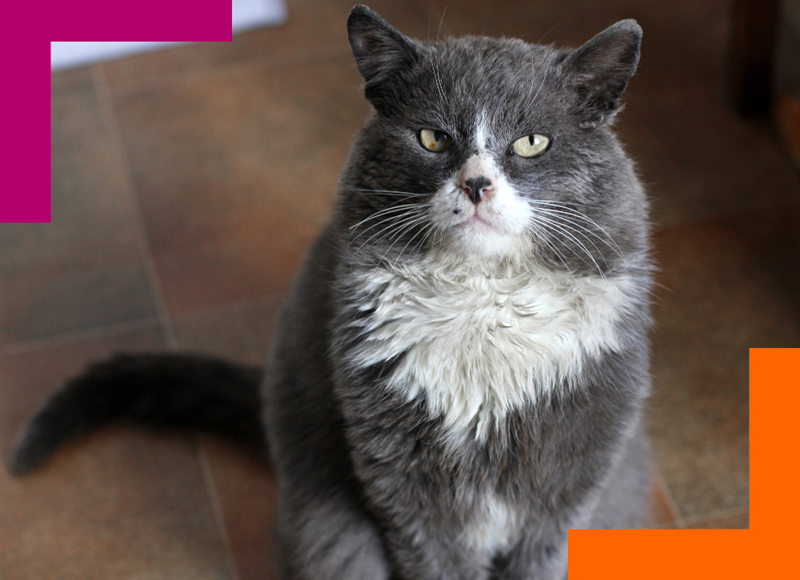 |
Great news! A new option for treating pain in cats due to OA is on the horizon.
|
 |
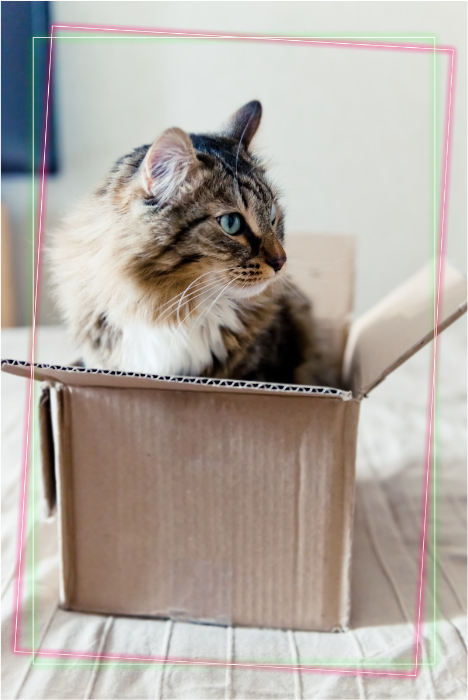 |

Coming later in 2022:
Solensia (frunevetmab) is an FDA-approved, once-a-month injection that controls feline OA pain.
It is in a new class of drugs for pets and works like your cat's naturally made antibodies to reduce pain signals.
|

|
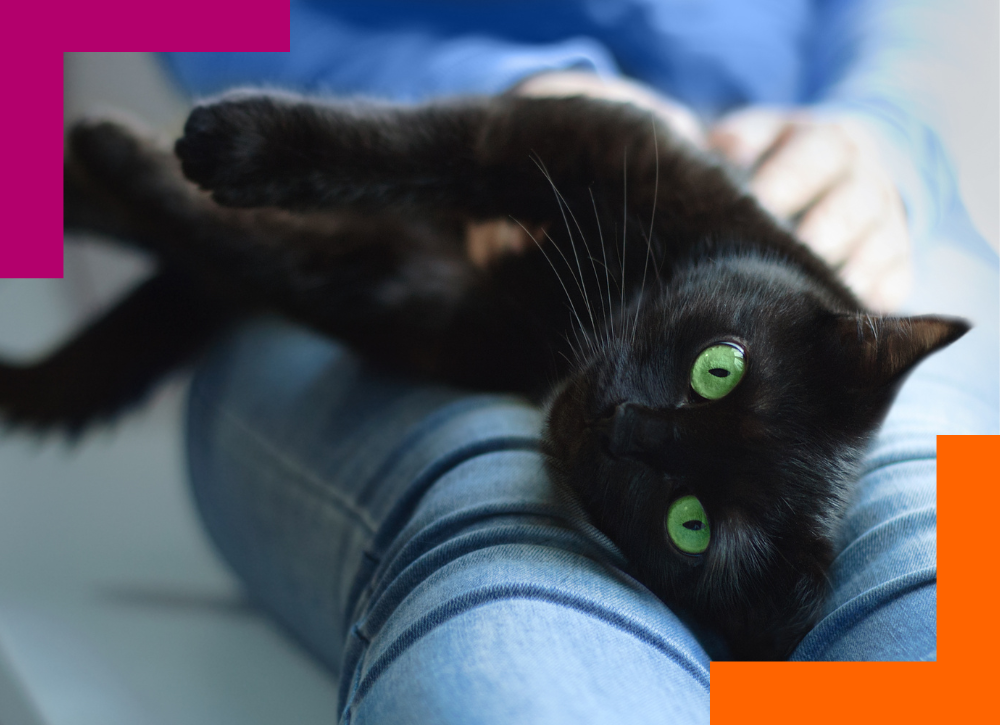 |
According to safety data, Solensia is less likely to impact organs and cause side effects than traditional therapy with NSAIDs. Owners report decreased OA pain and increased levels of activity in cats treated with Solensia. |
Solensia reports a low level of side effects (most commonly vomiting and pain on injection). Since it's is a new drug, and the first monoclonal antibody approved for use in pets, it will take time for pet owners and veterinarians to fully assess how well Solensia works and how safe it is.
|
Some signs that may indicate your cat is in pain from OA include:
- Difficulty jumping up or down
- Trouble with stairs
- Less playful/interactive
- Changes in sleeping behavior
- View the infographic below for more signs |
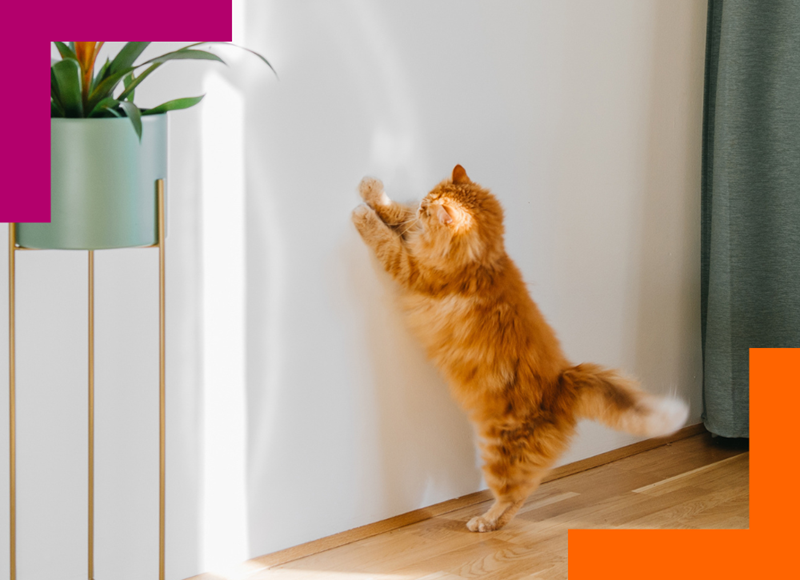 |
 |
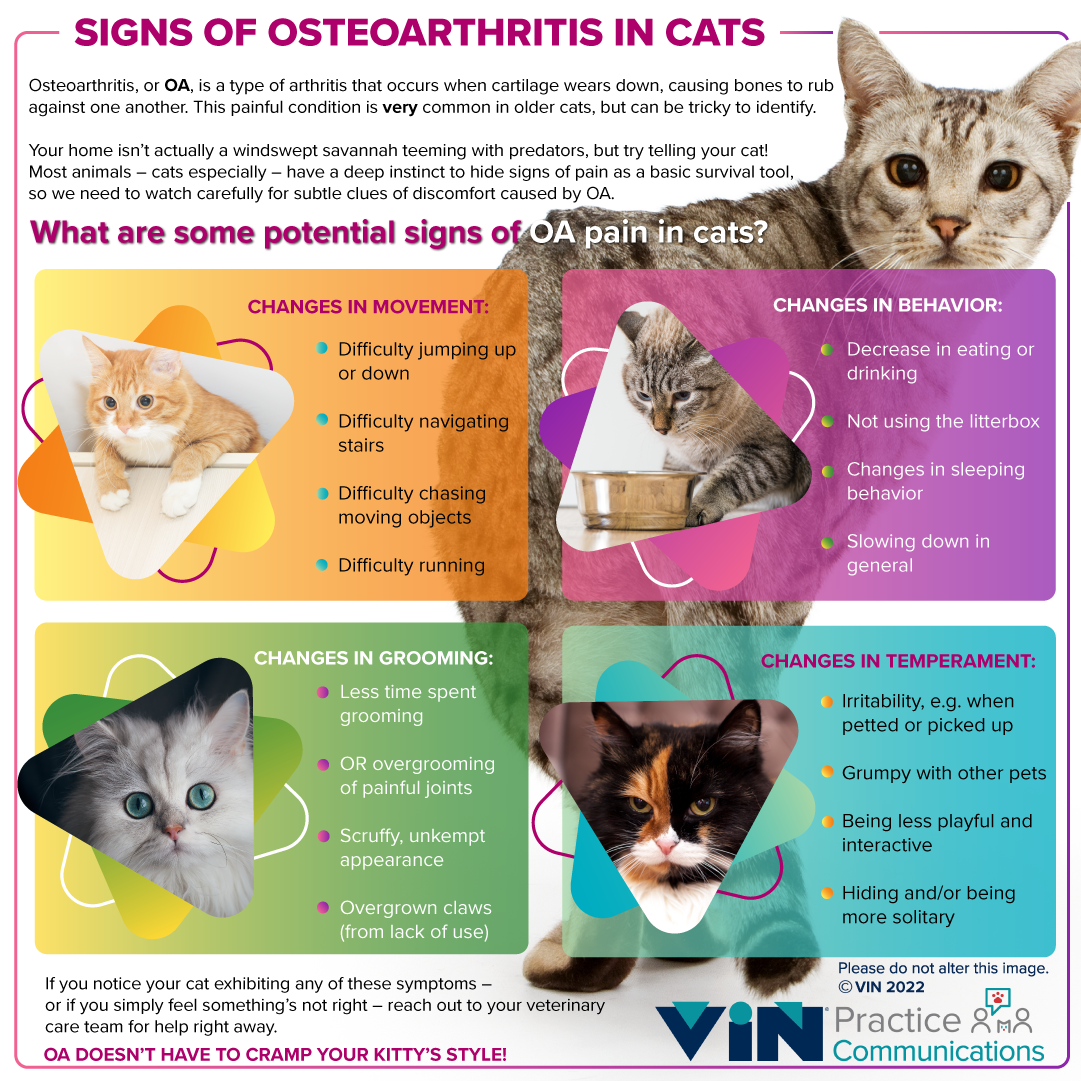
|










